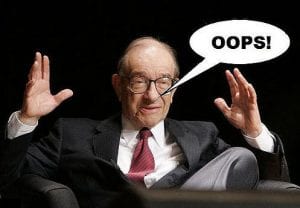
Success Uncorked: The Marvels of Contrarian Thinking
March 25, 2024
Welcome to a fresh perspective on success, where we uncork the marvels of contrarian thinking. This powerful tool for decision-making involves challenging conventional wisdom and questioning assumptions. It’s about going against the grain, defying popular opinions or beliefs in business and investing. The primary objective of contrarianism is to identify opportunities others may overlook and capitalise on them.
Contrarian thinking fosters critical thinking. It encourages us to scrutinise assumptions and challenge the status quo. This approach can detect flaws in current systems and procedures, leading to improvements and innovations that might not have been possible otherwise. It’s like turning on a flashlight in a dark room, illuminating blind spots that everyone else has missed. When everyone thinks the same way, missing important information or overlooking potential risks is easy. By adopting a contrarian mindset, we can unearth concealed opportunities and risks that may have gone unnoticed.
Another benefit of contrarian thinking is its ability to spark innovation and creativity. By challenging conventional wisdom, we can develop new and innovative solutions to problems. This can lead to breakthroughs in technology, business, and other fields. Contrarian thinking also helps individuals and organizations gain a competitive advantage. By taking positions opposite to the prevailing sentiment in the market, contrarians can identify undervalued assets and take advantage of them.
Legendary trader Jesse Livermore, known for his contrarian strategies, once said, “It never was my thinking that made the big money for me.” This statement underscores the importance of contrarian thinking in trading. Livermore understood that herd thinking ultimately ends long-term trends and starts new ones. So, while Wall Street takes its time to wake up, contrarian traders are already positioned for the latest trend.
Contrarian thinking is not just about being different for the sake of it. It’s about having the courage to challenge the status quo, the wisdom to see what others miss, and the patience to wait for the market to align with your perspective. It’s about thinking like Jesse Livermore, who knew that real money is made not by following the herd but by leading it.
So, let’s uncork the bottle of success with contrarian thinking. It’s time to think differently, act wisely, and reap the rewards of going against the grain.
Contrarian Thinking: Unveiling Revolutionary Discoveries
Contrarian thinking has often been the catalyst of significant discoveries and innovations. Let’s explore how this approach has shaped our understanding of the world:
For centuries, the consensus was that the Earth was the universe’s epicentre, with the sun and other planets in orbit. Ptolemy proposed this geocentric model, which is widely accepted and considered irrefutable. Yet, in the 16th century, Nicolaus Copernicus dared to challenge this long-standing belief with his heliocentric model.
Contrarian thinking drove Copernicus to place the sun at the centre of our solar system, propelling Earth and its fellow planets into orbit around it. This revolutionary idea, which contradicted the accepted wisdom of the time, faced fierce opposition. Yet, it laid a new foundation for understanding our cosmos.
In this context, contrarian thinking meant questioning the consensus and challenging ingrained beliefs. Copernicus had to challenge the status quo and propose an alternative explanation aligned with his observations and mathematical calculations.
This example underscores the power of contrarian thinking in advancing our knowledge and understanding. By questioning established beliefs and challenging conventional wisdom, we open ourselves to new possibilities and discoveries.
Contrarian thinking remains crucial in various fields, from science and technology to business and societal change. It encourages us to question assumptions, explore alternative perspectives, and push the boundaries of what is possible.
Contrarian Thinking in Geology: The Rise of Plate Tectonics
Contrarian thinking in geology led to the groundbreaking theory of plate tectonics. Initially, the Earth’s crust was supposed to be static, but in the 1960s, evidence from oceanic exploration and seismic activity research suggested otherwise. This new theory proposed that the Earth’s crust is fragmented into tectonic plates floating on a viscous underlayer, constantly moving and interacting with each other.
This paradigm shift explained natural phenomena like earthquakes, volcanic eruptions, and the formation of mountain ranges, fundamentally changing our understanding of Earth’s geological activity. The widely accepted theory underscores the value of challenging established scientific beliefs.
Contrarian Thinking in Medicine: The Advent of Germ Theory
In medicine, contrarian thinking was crucial in moving from miasma to germ theory. In the 19th century, scientists like Louis Pasteur and Robert Koch contested the idea that ‘bad air’ caused diseases, instead identifying microorganisms as culprits. Pasteur disproved spontaneous generation and introduced the concept of pasteurization, while Koch linked specific bacteria to diseases, laying the foundation for modern microbiology.
Their work led to improved sanitation, the development of vaccines, and a new era of medical treatments, demonstrating the profound impact of challenging the consensus in scientific progress.
Contrarian Thinking in Investing: Lessons from Buffett, Lynch, and Livermore
Contrarian thinking in investing involves a strategic assessment of risks and rewards, often leading to substantial gains. This approach, championed by notable investors like Warren Buffett, Peter Lynch, and Jesse Livermore, requires a deep understanding of market psychology and the courage to act against the crowd.
Warren Buffett’s investment success is primarily attributed to his contrarian philosophy of being “fearful when others are greedy, and greedy when others are fearful.” Buffett capitalises on market corrections by buying undervalued companies during market pessimism and holding them over the long term.
Peter Lynch, another contrarian investor, excelled by investing in companies that were either overlooked or deemed unattractive by the majority. His ability to recognize the potential in these underappreciated assets resulted in remarkable returns for the Fidelity Magellan Fund during his tenure.
Jesse Livermore, a legendary trader, took contrarianism to the trading floor. Based on meticulous research and his understanding of market behaviour, he often went against market trends. While sometimes controversial, his speculative strategies demonstrated the potential for high rewards when contrarian bets were placed correctly.
These investors illustrate that contrarian thinking, rigorous analysis, and patience can lead to exceptional investment outcomes. By daring to diverge from the herd and embracing a long-term perspective, contrarian investors often find themselves ahead of the curve when the market eventually adjusts.
Contrarian Strategies of Investing Legends
Contrarian investing often involves going against prevailing market sentiments to capitalize on mispriced assets. Warren Buffett, Peter Lynch, and Jesse Livermore are prime examples of investors who excelled by applying contrarian principles.
Warren Buffett’s Contrarian Moves:
Buffett’s Berkshire Hathaway made a historic investment during the 2008 financial crisis. When most investors fled the financial sector, Buffett saw an opportunity and invested $5 billion in Goldman Sachs. This move was quintessentially contrarian, as it went against the widespread panic. The investment paid off handsomely as the markets stabilized and recovered.
Peter Lynch’s Unconventional Picks:
As the manager of the Magellan Fund at Fidelity Investments, Lynch was known for his “invest in what you know” philosophy. He often invested in mundane, boring businesses that were ignored by the market but had strong fundamentals. An example of his contrarian approach was investing in Hanes after recognizing the potential of its L’eggs pantyhose product, sold in supermarkets when this was not a common practice for clothing items.
Jesse Livermore’s Market Timing:
Livermore, a famed trader from the early 20th century, made a fortune by short-selling during the 1907 and 1929 market crashes. His contrarian approach was based on his reading of market behaviour rather than the prevailing economic optimism of the time. By recognizing the signs of overvaluation and market bubbles, Livermore positioned himself against the market trend and profited from the subsequent downturns.
When combined with thorough analysis and a deep understanding of the market, these investors demonstrate that contrarian thinking can lead to exceptional investment opportunities. Their success stories are a testament to the potential rewards of contrarian investing.
Synergizing Contrarian Thinking with Mass Psychology and Technical Analysis
Contrarian thinking gains a potent edge when aligned with mass psychology and technical analysis. Contrarians often take positions counter to market sentiment, but by also considering mass psychology, they can pinpoint the emotional extremes that signal market reversals. This synergy prevents acting prematurely, reducing exposure to prolonged volatility.
For example, in the dot-com bubble of the late 1990s, contrarians who recognized the overvaluation of tech stocks were proved correct when the bubble burst. However, those who also monitored mass psychology avoided early entry, waiting until public euphoria peaked, as evidenced by extreme investor leverage and the prevalence of tech stock conversations in everyday life.
Technical analysis further refines this approach. Investors can better time their market entry and exit by identifying overbought or oversold conditions through tools like the Relative Strength Index (RSI) or Bollinger Bands. This tri-fold strategy can be seen in action with the 2008 financial crisis. A contrarian might have recognized the housing market’s unsustainability. Still, they would have optimised their entry point for the subsequent recovery by waiting for the peak of panic (mass psychology) and employing technical indicators signalling oversold conditions in 2009.
Combining these disciplines creates a more robust investment strategy. Contrarian thinking identifies mispriced assets, mass psychology helps time the market’s emotional cycles, and technical analysis offers precise entry and exit points, leading to a comprehensive investment framework.
Conclusion: The Wisdom of Contrarianism in Markets and Thought
Contrarian thinking, exemplified by investing legends like Warren Buffett and Peter Lynch and philosophical giants such as Socrates and Aristotle, is a powerful tool within and beyond the financial markets. Buffett’s strategic investments during market downturns and Lynch’s knack for identifying undervalued companies highlight the tangible benefits of this mindset in finance. Meanwhile, Socrates’ questioning of the status quo and Aristotle’s emphasis on empirical evidence and observation showcase the enduring value of contrarian thought in intellectual pursuits.
Challenging the prevailing sentiment, contrarian thinkers often unveil overlooked opportunities and bring about pivotal changes. In science, this approach has led to revolutionary theories and discoveries, while investing has resulted in superior returns during market inefficiency.
Yet, contrarianism is not without its challenges. It requires a delicate balance of scepticism and openness, a thorough evaluation of evidence, and the fortitude to withstand initial criticism. The key lies in not embracing contrarianism for its own sake but employing it to uncover truth and value where others have not looked.
Ultimately, contrarian thinking encourages a holistic approach to problem-solving and decision-making, rewarding those who dare to look beyond the consensus with both intellectual growth and financial success.
The video above discusses strategies for investing in stocks using contrarian analysis and an understanding of mass psychology and behavioural finance. It explains how to identify opportunities that counter prevailing market sentiment by analyzing extreme pessimism or optimism, fear and greed. The presentation focuses on how considering factors like crowd behaviour and biases can help investors gain an edge by making trades in the direction opposite to herd reactions.
Beyond the Ordinary: Fascinating Articles That Stand Out

NKE Stock Price Projections and Long Term Targets

Huge Risk to US Economy: Fact or Fiction?

Mass Hysteria Definition Unraveled: Exploring the Enigma

Inflation News: Real Inflation Set to Surge

Resource Wars: Navigating a Shifting Global Landscape

Stock Market Sell-Off: Embrace Fear & Seize Opportunities

Crisis Investing: Turning Market Crashes into Opportunities

Yuan Vs Yen: Yuan On course to Challenge Yen

ASAN Stock Price Trends: Poised for Takeoff or Set to Decline

Ultimate Oscillator: The Volatility Indicator

Navigating Success: Top Stocks of 2016

Is The Stock Market Crashing: Separating Signal from Noise

Greenspan Put: Why the Maestro has it Wrong?

Financial Insights: Cutting Through the Noise

Strategic Precision: Navigating with RSI MACD Mastery


